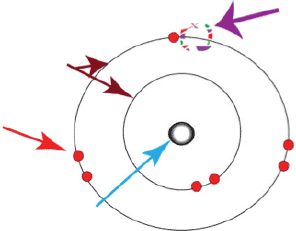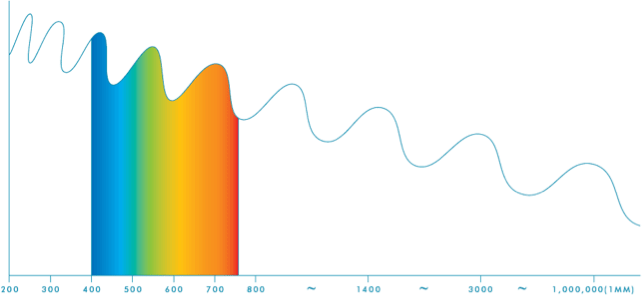SkinCeuticals Terms & Phrases
Antioxidant
A molecule that neutralizes free radicals, including reactive oxygen species (ROS). Antioxidants donate their own electrons to ROS, thus neutralizing the ROS and ending the cascade of damage. Unlike other molecules, an antioxidant molecule is non-reactive even when it has an unpaired electron.
Apoptosis
A process of cell death by which cells undergo a sequence of programmed events which lead to death of the cell, as occurs during growth and development of the organism, as a part of normal cell aging, or as a response to cellular injury.
Ascorbyl palmitate
Vitamin C derivative; does not convert to L-ascorbic acid when applied topically. Is toxic to keratinocytes in the presence of UVB.
Biomarkers
Biological indicators of a process taking place in the skin. SkinCeuticals antioxidants are examined with biomarkers—such as thymine dimer formation and sunburn cell formation—to establish activity in the skin.
Broad-spectrum antioxidant
An antioxidant that protects skin cells and their DNA by exhibiting broad-range bioactivity to prevent oxidative stress at multiple steps in the oxidative pathway.
Combination antioxidant
Formulations containing multiple antioxidant ingredients which, when effectively formulated, perform synergistically to provide superior results to single antioxidant formulations. Combination antioxidants must meet the following criteria to prove antioxidant synergy: 1) Each antioxidant in the combination must penetrate skin, 2) they must be proven compatible together, and 3) the antioxidants must provide better benefits together than alone.
Dermal-epidermal junction (DEJ)
Anchors the epidermis to the dermis and serves the following functions:
(1) epidermal-dermal adherence, (2) mechanical support for the epidermis, (3) absorption of nutrients from the dermis into the epidermis, and (4) a barrier to the exchange of cells and of some large molecules across the junction.
Dr. Sheldon Pinnell
Founding Scientist and Chief Medical Consultant at SkinCeuticals. Defined the formulation characteristics necessary to deliver L-ascorbic acid into the skin. Received his medical degree at Yale University; completed residency at Harvard and Massachusetts General Hospital; has been at Duke University since 1973. Served as Chief of Dermatology at Duke from 1982-1997.
Duke Antioxidant Patent
See “L-ascorbic acid formulation characteristics.”
Edema
Swelling of the skin.
Erythema
Redness of the skin.
Ex-vivo
Studies performed on skin removed from the body. Cannot accurately measure bioavailability because there is no fully functioning metabolism.
Free radicals
A molecule with at least one unpaired electron. Due to the unpaired electron(s), free radicals are unstable and will attack nearby molecules in an attempt to “steal” the nearby molecule’s electron. When the attacked molecule loses its electron, it becomes a new free radical. Free radical formation has a cascade effect, often resulting in damage that destroys structures of the skin such as collagen, elastin, or DNA.

Glycation
When excess glucose molecules cross-link to proteins such as collagen and elastin. Glycated fibers are rigid, lose their regenerative ability, are resistant to MMPs, and are irreversible.
High-performance liquid chromatography (HPLC)
Reliable and accurate qualitative and quantitative determination of antioxidant levels. Identifies and quantifies pure, individual components of a mixture by their complete molecular structure.
Infrared radiation
The range of radiation that runs from 760 nanometers to 1 million nanometers on the solar spectrum. IR is divided into IRA (760 – 1,440 nm), IRB (1,440 – 3,000 nm), and IRC (3,000 – 1 million nm). IRA causes an array of damage to the skin, including damage to the extracellular matrix, premature cell apoptosis, and upregulation of MMP-1.
Integrated skincare model
Long lasting comprehensive results achieved through the combination of state-of-the-art clinical procedures, professional treatments, and advanced homecare. An in-office / at home program centered around clinical procedures that offers pre-conditioning, post-treatment, and daily use homecare products to maintain and complement in-office clinical procedures, such as laser rejuvenation or injectables. Professional treatments performed under medical control, such as anti-aging facial protocols and superficial chemical peels, further enhance patient’s results. Benefits of integrated skincare include: 1) increased patient visit frequency and 2) increased patient satisfaction.
Integrated skincare
clinical
procedures + advanced homecare + professional treatments = Long Lasting
Comprehensive Results
In-vitro
Testing performed in an artificial environment outside of a living organism. Studies performed in-vitro (for example, in cultured skin cells) cannot accurately measure bioavailability because there is no fully functioning metabolism.
In-vivo
Clinical studies performed on live skin. Due to the skin’s fully functioning metabolism, in-vivo clinical studies are the best way to accurately test penetration of an antioxidant formulation.
L-ascorbic acid
Pure vitamin C. The only form of vitamin C used in SkinCeuticals antioxidants.
L-ascorbic acid formulation characteristics
Vitamin C formulation criteria established by Dr. Pinnell in the study “Topical L-Ascorbic Acid:
Percutaneous Absorption Studies” (S. Pinnell et al, Dermatologic Surgery, 2001). To penetrate skin, the formulation must: a) contain pure L-ascorbic acid, b) contain optimal levels (10%-20%) of pure L-ascorbic acid, and c) be formulated at a pH of 3.5 or below. These formulation characteristics are criteria of the Duke Antioxidant Patent. All SkinCeuticals antioxidants are formulated to this criteria.
Magnesium ascorbyl phosphate
Vitamin C derivative; does not convert to L-ascorbic acid when applied topically.
Matrix metalloproteinase (MMP)
Enzymes responsible for degrading collagen. Under normal conditions, MMP degrades damaged collagen that is replaced with new collagen. However, when MMP levels are elevated, it can degrade healthy collagen.
Minimal erythema dose (MED)
The minimum amount of UVB radiation required to produce minimal erythema within a few hours following exposure.
Nanometers
Measurement used in the solar spectrum. The solar spectrum is divided as follows:
- UVC: 100 – 280 nm
- UVB: 280 – 320 nm
- UVA II: 320 – 340 nm
- UVA I: 340 – 400 nm
- Visible light: 380 – 740 nm
- Infrared A: 760 – 1,440 nm
- Infrared B: 1,440 – 3,000 nm
- Infrared C: 3,000 – 1 million nm

Oxidation
The loss of electrons, or electron transfer of a molecule, by an oxidizing agent. Free radicals in the skin are oxidating agents, leading to chain reactions that cause oxidative stress. Oxidative stress causes cell damage and cell death.
P53
Protein that monitors DNA damage, prompting either a) slowed cell division to allow for DNA repair or b) cell apoptosis (cell death).
Radio labeling
Method of measuring topical antioxidant penetration. Can be inaccurate as it cannot decipher between molecular fragments and whole molecules.
Reactive oxygen species (ROS)
Unstable oxygen molecules that contain unpaired electron(s). ROS can modify and damage nucleic
acids, proteins, and lipids, which can lead to skin cancer and photoaging. ROS are created by the body’s own processes, but can also be induced in excessive amounts by environmental stressors such as UV exposure or pollution. ROS are an overarching category of damaging oxygen molecules, made up of groups including oxygen ions and peroxides.
Thymine dimers
DNA mutations resulting from exposure to UV light; can lead to the formation of skin cancer.
UV immunosuppression
Stifled activity of the immune system following exposure to sunlight. UV immunosuppression occurs in approximately 1/3 of humans and is found in over 90% of individuals who get skin cancer, both melanoma and non-melanoma.
yy
werwerwer


